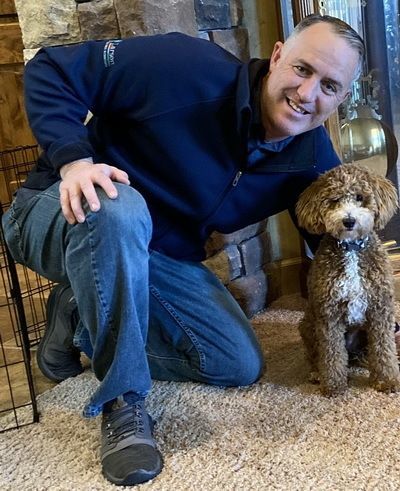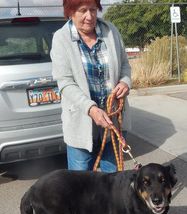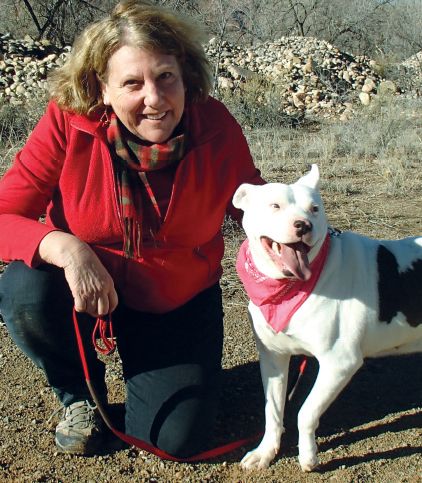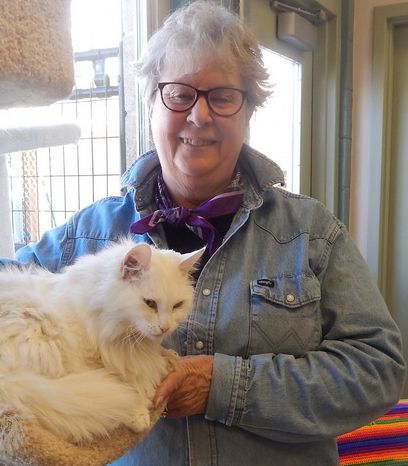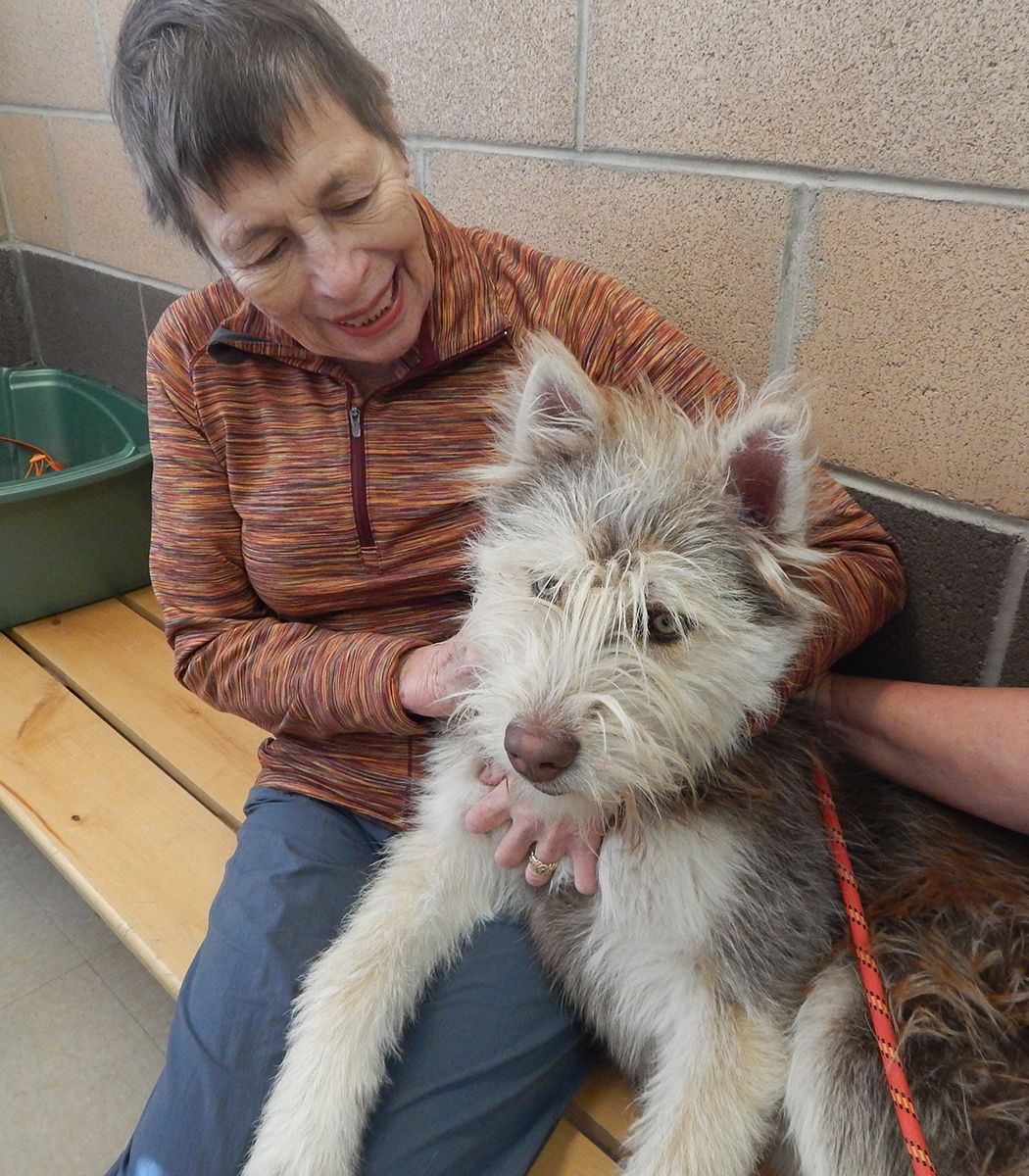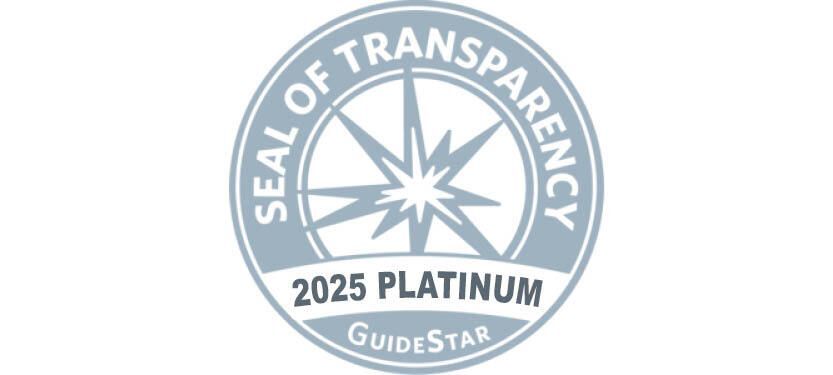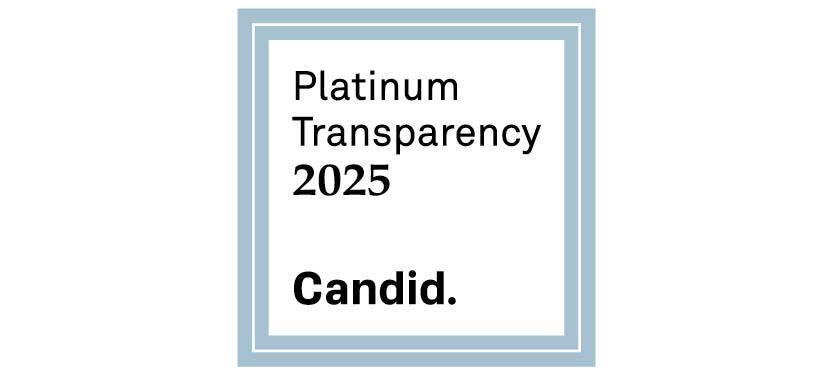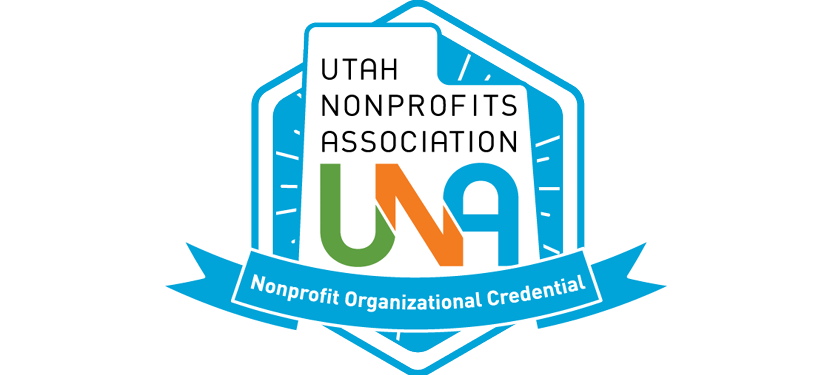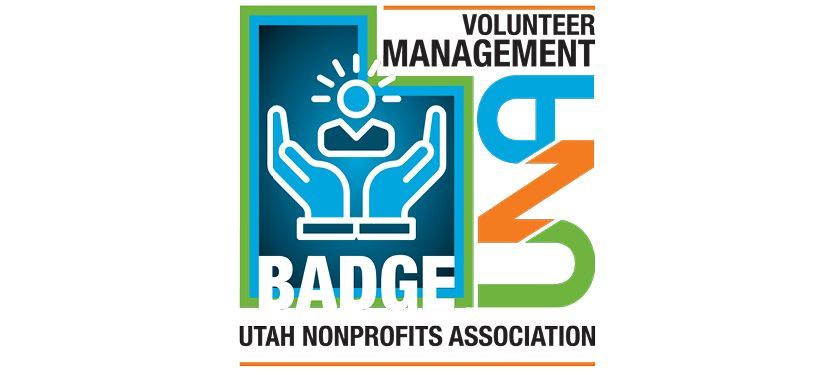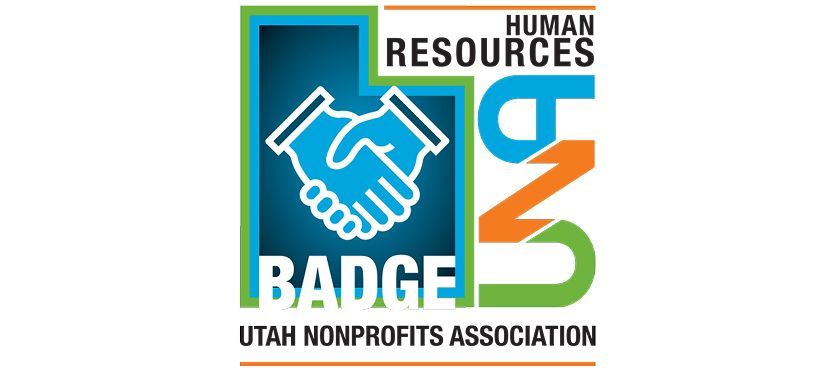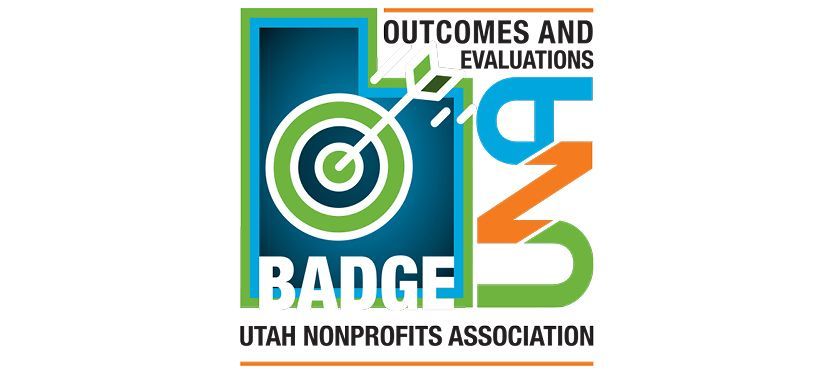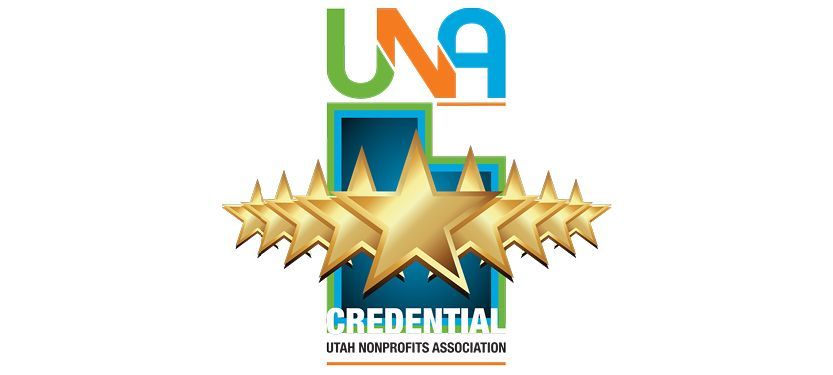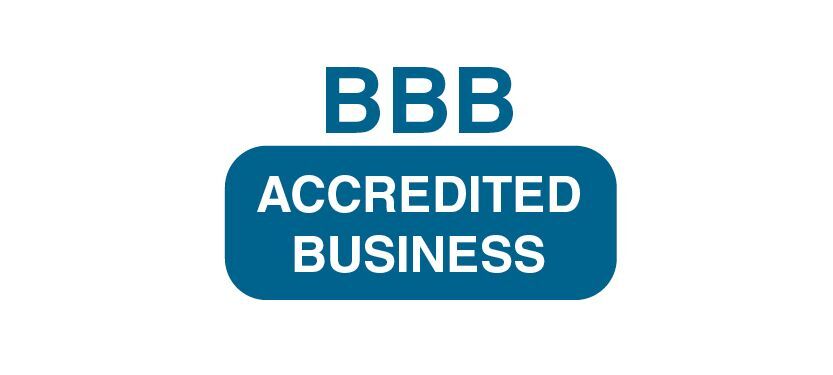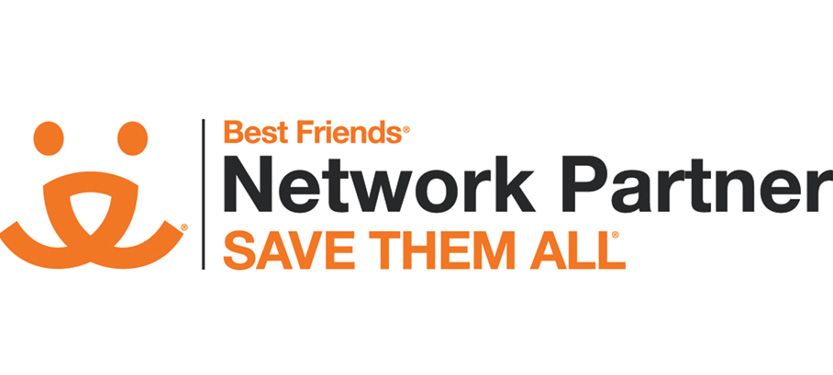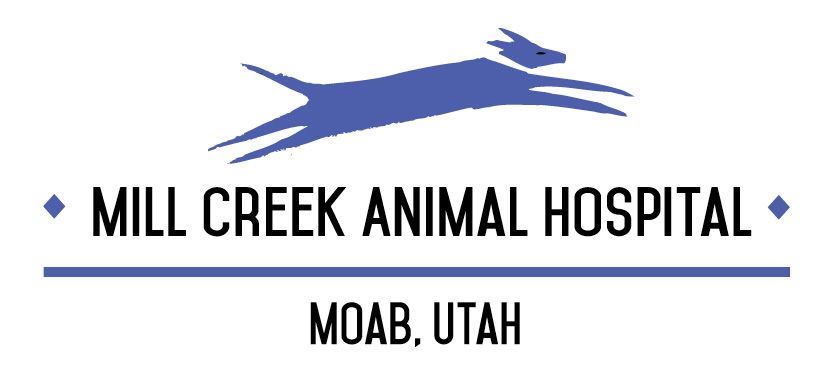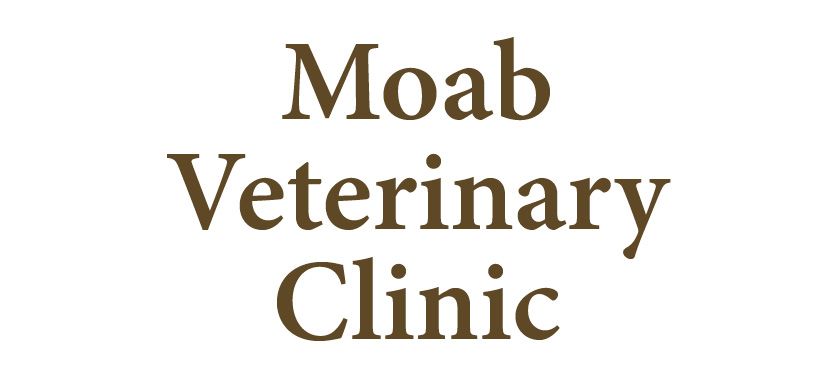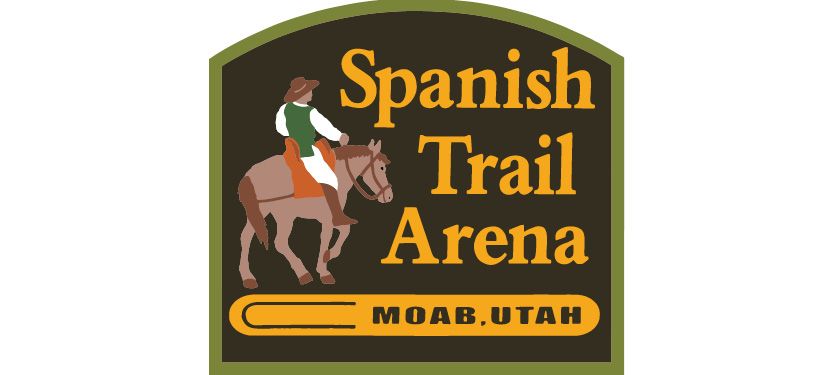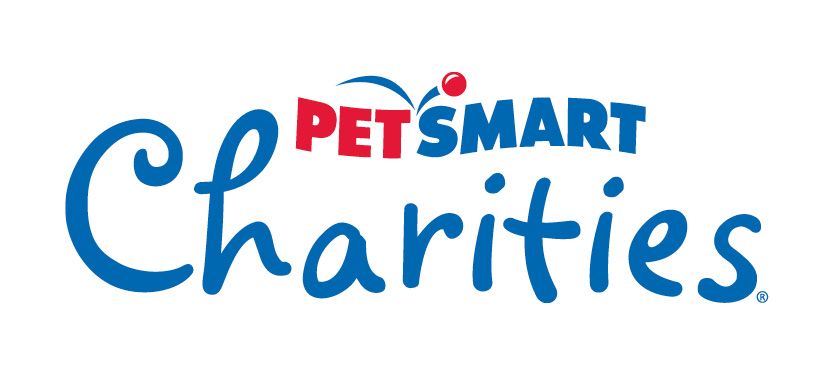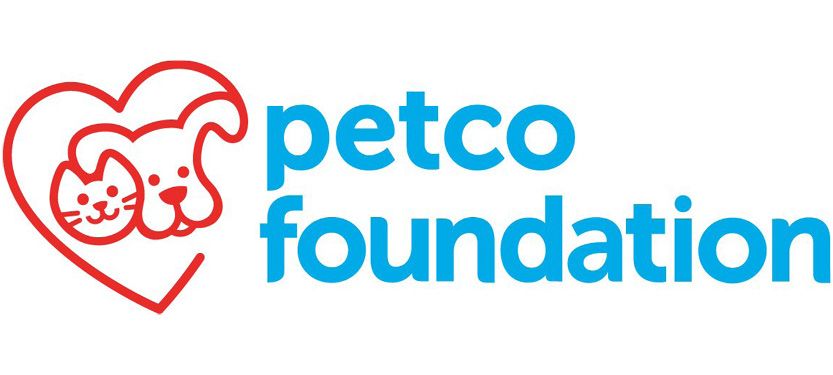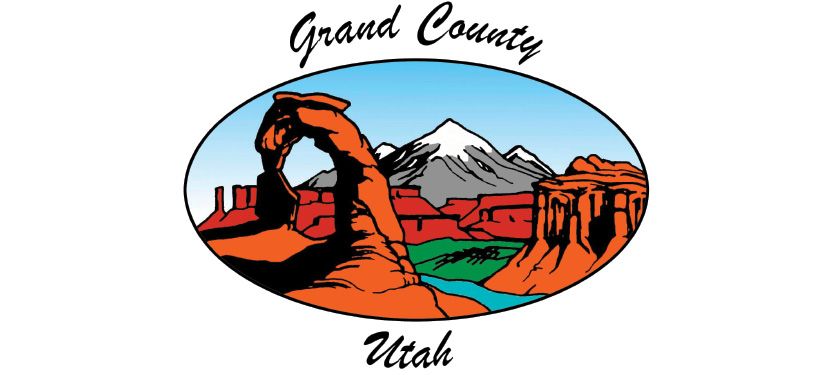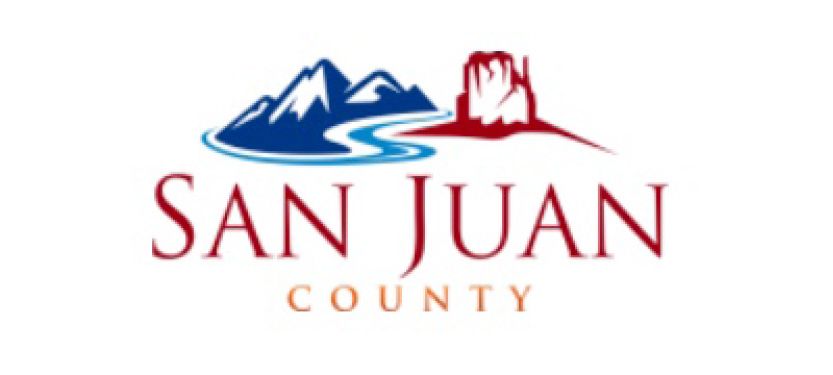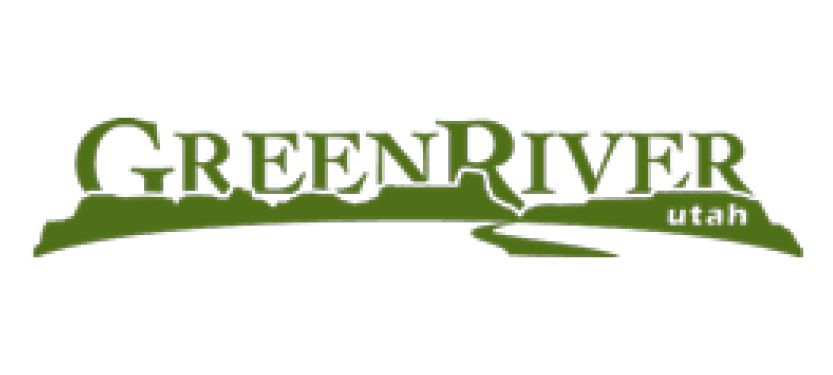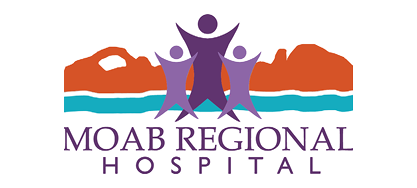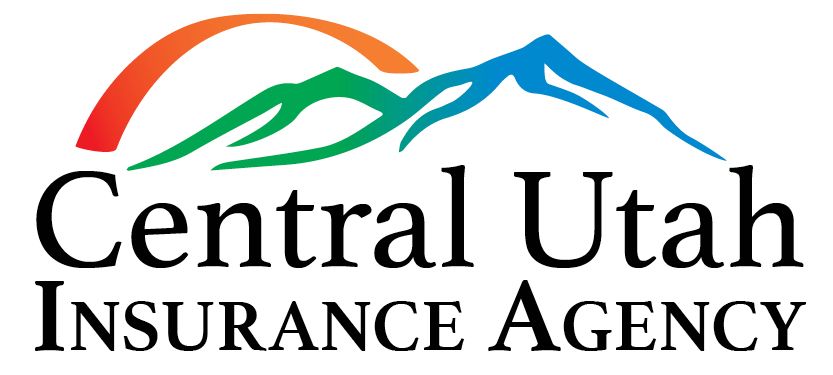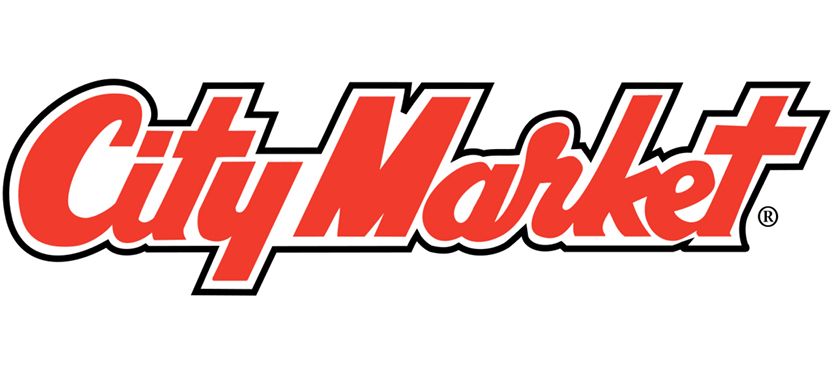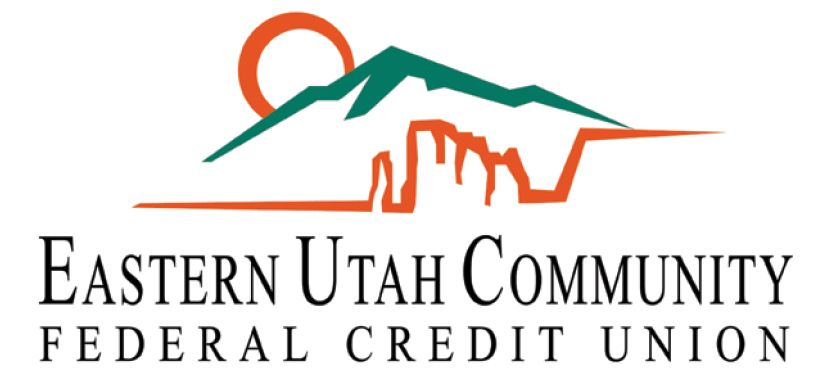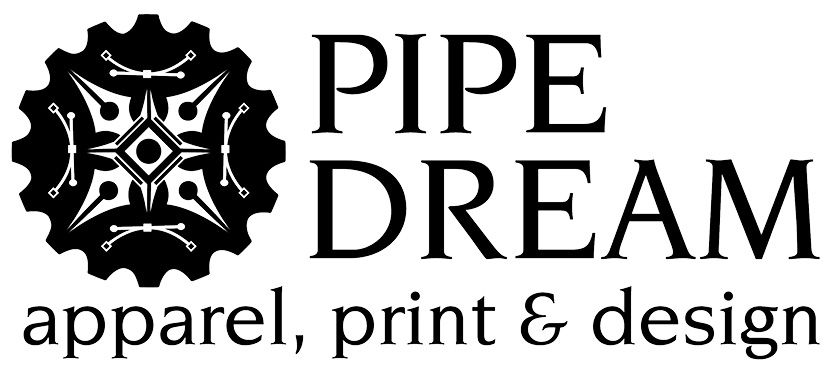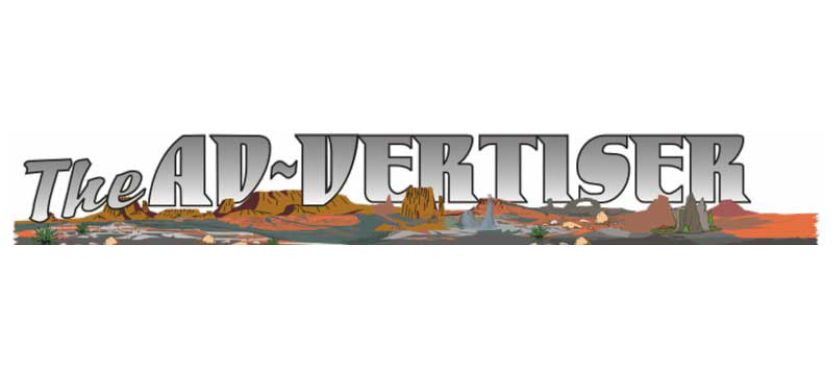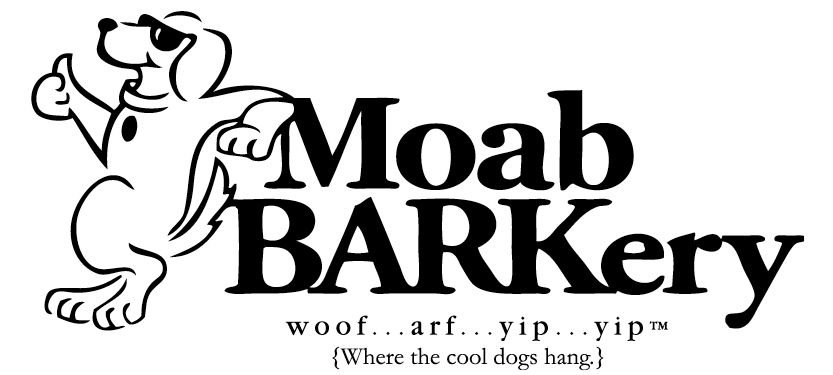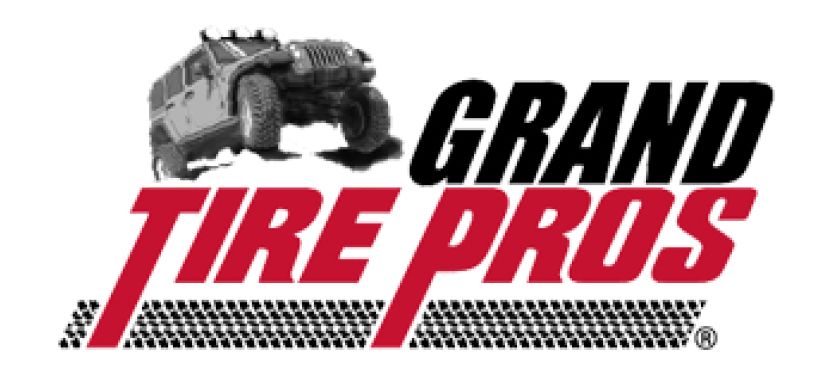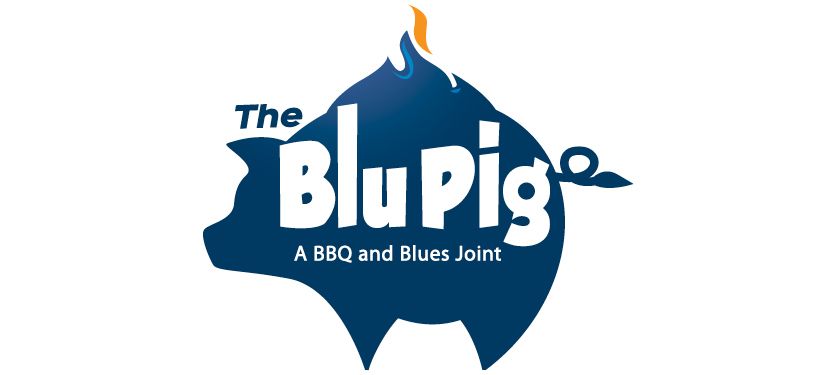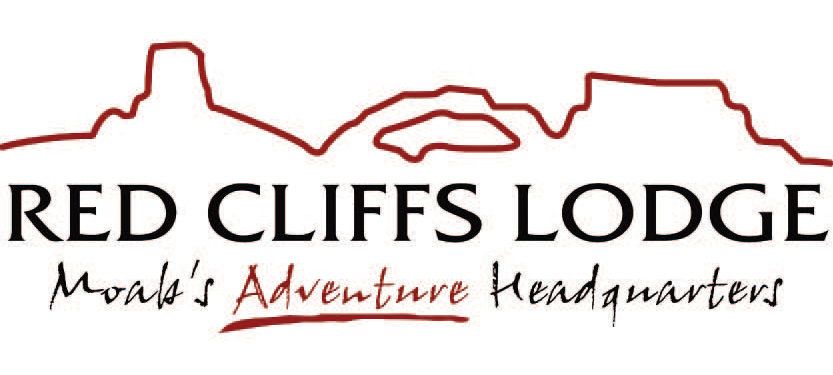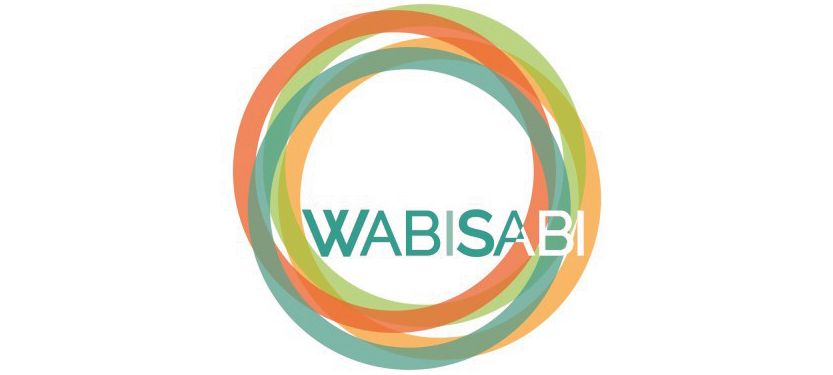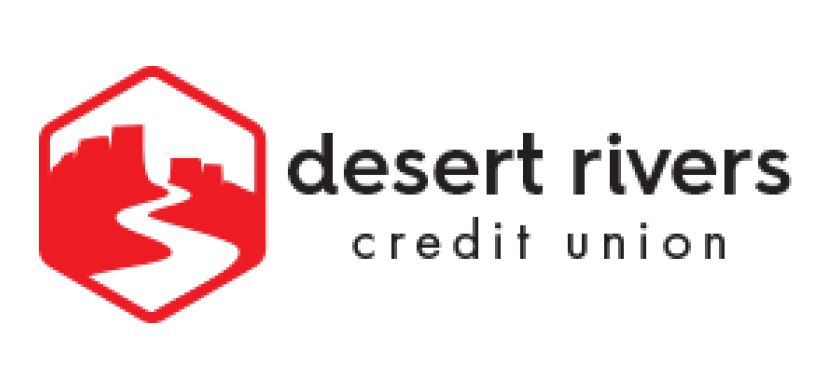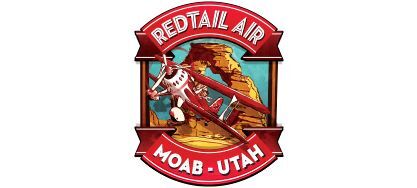MISSION
The Humane Society of Moab Valley promotes and provides responsible care for our community’s animals.
VISION
Every pet has a safe, healthy, happy life and a forever home.
VALUES
Our compassion for animals inspires integrity, honesty, transparency and tenacity in our work and relationships as well as dedication to our community and its animals.
MEET OUR TEAM
MEET OUR DEDICATED VOLUNTEERS
This article was written March 2020
Humane Society of Moab Valley - Saving Lives for 20 Years
Imagine establishing a nonprofit animal welfare organization with no money, no office, no phone, and no foster homes. Add to that the stress of animal euthanization every week because housing was not available. That is what the founders and volunteers of Humane Society of Moab Valley (HSMV) faced in 1999.
Twenty years later, the organization is thriving and Moab has been a no-kill community since 2003, thanks to solid guiding principles by the founders and unwavering community support. It is a tribute to the farsighted founders that HSMV’s purpose remains relevant to our community today: to provide public education for the humane treatment of animals; to provide safe shelter for animals, and to provide the community with a low-cost spay/neuter program.
The HSMV office has been staffed during the pandemic shutdown and the organization continues to help and care for surrendered and abandoned dogs and cats as well as provide pet food for those in need. Spay and neuter services resumed as soon as non-essential medical procedures were allowed. The animals in the shelter aren’t aware that town was shut down. Their schedule is still full of petting, treats, and walks for the dogs.
HSMV and Moab Animal Shelter ongoing partnership
The HSMV office is located at the Moab Animal Shelter, 956 Sand Flats Road. The shelter is operated by the City of Moab which provides office space and utilities for us at no cost; however, we are separate entities sharing the same goals by working together to help local homeless animals. All the animals housed within the shelter are the property of the City of Moab and fall under the jurisdiction of the City and the Shelter Manager. The Shelter intakes most of the community animals and we advertise animals in the Advertiser, post them on FACEBOOK and our website. Local businesses help us by sponsoring the advertisements. We pay to spay or neuter all shelter animals. Foster homes are used primarily for special care or young animals. This saves us considerable time and money and the "residence time" for the animals in the shelter is not as long as it has been in the past. HSMV also provides low and no cost spay/neuter programs and pet food bank for those in need as well as a Trap/neuter/return (TNR) program for feral and homeless community cats.
Each entity has its own volunteers, although some people volunteer for both entities. This collaborative public and non-profit partnership is unusual because most nonprofit animal welfare organizations and government shelters do not work together. In fact, many seem to be at odds with each other. The HSMV and Moab Shelter partnership works very effectively in our part of the world because both organizations have the same goals and share resources to save money. This is a win-win situation for our community as well as the animals. Because of this collaboration, Moab became the second no-kill community in the state, just behind Best Friends Animal Society in Kanab.
“We rescue and sterilize dogs and cats from right here in our community”, says Leigh Ryan, who has been the Executive Director of HSMV for the last 8 years. “We assist local residents if they can no longer care for their pet and we help place local abandoned animals. The money donated to our organization helps both our neighbors and our community’s animals.”
“We keep animals long enough before advertising them for adoption so that we know they are healthy and we know their personalities. This way, we can match an animal’s activity level and personality with a new home. We work hard to match the animal and owner”, adds Janette Woodruff, Shelter Manager.
HSMV Beginnings
Dog and cat euthanizations were staggering for a small community between the years 1997 and 2000. Seventy percent of dogs and cats, an average of 440 homeless animals per year, were euthanized because housing was not available for these animals. A 3-day hold was in place for all animals because the pound kept filling up. Some local individuals were rescuing homeless animals from the pound to keep them from being euthanized, but there were too many animals and not enough homes. Something needed to be done.
Humane Society of Moab Valley was created when concerned citizens first met in January 1999 to do something about the proliferation of homeless pets and the ongoing euthanizations. The new organization needed direction and structure. There was so much to do. Meetings were held every other week for months and volunteers researched specific areas and reported back at the following meeting. Judy Powers, Diane Allen, Sharon Brussel, and Karen Wise were at the center of things and were later elected to be the first board of directors.
A 501(c)3 nonprofit status was decided, which meant Articles of Incorporation and Bylaws needed to be written. The organization’s name and geographic extent of the area served was established. Humane Society of Moab Valley would be the name and Moab Valley would be the area served.
Early Days
A first order of business was raising money. The early years showed great creativity. Cosy Sheridan held a benefit concert; City Market put out donation jars for a month; raffles, craft fairs, yard and bake sales were held; events such as a raft trip and dog washes were offered. Joe Kingsley donated a used computer and Humane Society of the United States donated a digital camera to take photos of the animals. Some money was obtained through grants and donations.
Adoption days for cats were held at The Barkery which was located on Main Street at that time. Adoption days for dogs were held at City Market and at other locations around town. Initially, a table was borrowed to place at City Market for adoption days until one was donated. Volunteers would spread the table with toys and treats to sell to make money.
Feral cats were also an issue. Margaret Griffith was instrumental in getting the Trap Neuter Return (TNR) program started in 2001 which greatly reduced the number of kittens born to feral cats. Randy Zimmerman, who was hired as the Moab City’s Animal Control Officer in April 2000, remembered that before Margaret was involved, Animal Control would go to one location and trap 30 cats. Six months later, Animal Control would return to that same location and trap 30 more cats because they were not being sterilized. After Margaret began trapping and sterilizing cats, the first big decrease in euthanization in our community occurred. In 2004, Margaret was runner-up in the National Feral Cat Activist Award sponsored by Alley Cat Allies in New York City for her pioneering work in Moab.
By March 2004, 800 cats and dogs had been rescued and placed into forever homes. After being volunteer-run run for almost seven years, HSMV hired its first paid employee in the fall of 2005, thanks to an ongoing monthly donation by Hans and Madeleine Weibel. This made it possible to organize volunteers, schedule spay/neuter clinics, and fund raise.
A Shelter Takes Shape
A stroke of luck for the homeless animals in Moab Valley showed up in the form of Randy Zimmerman, City Animal Control Officer. HSMV volunteers worked with Randy to get dogs and cats into foster homes. Randy would call when he picked up a dog or cat and volunteers would scramble to find it a temporary foster home. Opportunities for adopting and fostering animals spread by word of mouth. Additional volunteers and foster parents stepped up to help as time went on, although there was always a shortage of dog foster homes.
Establishing a shelter was discussed as early as 2000. “The shelter wouldn’t be here if it weren’t for Randy Zimmerman,” says Janette Woodruff, Shelter Manager. “Randy was instrumental in making residents aware of animal control issues and the many dogs and cats that had to be euthanized because there was no place to keep them. It was heartbreaking to look at a beautiful, friendly animal or a litter of puppies and know that they would be euthanized in three days unless they were adopted or placed in foster care.”
Initially, animals were housed at the veterinarians, but in 2003 Moab City kept homeless dogs in a small building located behind the present location of the City offices. There was no window in the building so Randy cut a hole in the door so the dogs would have light. There were four 4’x 8’ dog runs and an exercise pen, all made from retired ball park home run fencing. Sawdust chips were scattered on the asphalt lot in the exercise pen for a bit of comfort. Cats were sheltered at the veterinarian.
When work began to upgrade the City buildings, the Pound was moved to the Spanish Trail Arena in 2004. An existing three-sided building was framed in and a door and window cut in the side. The four runs and ball park panels were moved to that location. There was even enough room for a small desk. By 2003 Moab was a no-kill community.
The Shelter becomes a reality
HSMV, Randy Zimmerman, and City administrators began to explore building an animal shelter. Numerous meetings and field trips to other shelters were held along with discussions on exactly what a shelter should be, how it should be built, and what should be in it. Discussion included whether to have a pound versus a shelter and if there would be a partnership between the City and HSMV.
In 2002 the City Council wrote a letter offering land to HSMV for an animal shelter as long as a 501(c)3 organization operated the shelter. This possibility raised a lot of questions because it required a lot of start-up and operating money. After much research and foot work, it was decided that HSMV couldn’t guarantee financing a shelter in perpetuity at that time.
HSMV opened a bank account in March 2004 with $2,000 specifically for funding a shelter and began soliciting funds with the understanding that this money would be given to the city for a new shelter. Individuals and businesses stepped up to raise money for the new shelter. Ralph and Jane Herrick donated money each month that they saved by not going out to dinner; Lou Gostlin donated money she collected from her quilting clinics; Rose Fryer organized an annual solstice garage sale; Hans and Madeleine Weibel sponsored a Sportsmobile Event that asked for donations instead of an entry fee; Tom Russell of Salmon Air donated free flights between Moab and Salt Lake City; Paul and Zee McCarroll at the Center Café held a BBQ; Rim Rock Roadrunners donated money; Caroline and Duncan Mackie donated a website design with a donations button; Collette Webster donated handmade ceramic mugs with the HSMV logo on them; Mondo’s coffee shop sold HSMV travel mugs; Sam Cunningham donated two Navajo rugs for auction. These are only a few of the innovative ways that money was raised. Numerous individuals and businesses gave generously so that a shelter could become a reality.
By October 2004 HSMV had $24,000 in its shelter account and by the end of the year, $150,000 had been raised or pledged. This was none too soon because HSMV was at its capacity limit, fostering 10 dogs and 20 cats and there was a waiting list for foster care.
After looking at many locations, the City and County agreed to build the shelter on City property next to the Recycle Center, where the shelter is today. Residents supported this location because they wanted the shelter located close to the city. This in-town, visible location could offer centralized services for pet adoption, humane education, and lost and found services. The City began talking to surrounding property owners because the parcel required rezoning. As soon as approval from the Planning Commission and Council were obtained in 2005, fundraising would have to shift into high gear.
Financing the shelter took longer than expected. In late summer 2005, Joe Kingsley challenged local realtors to raise $125,000 by Thanksgiving so an official Shelter groundbreaking could occur in November. By May 2006, the Shelter building had been designed and a contractor’s bid was in hand. The project was still $72,000 short. This amount had to be raised within a month to go forward with the bid contract price. The City committed to covering one-half of the shortfall if HSMV raised the remaining funds. HSMV began an all-out effort to raise the money in this time frame. That deadline was missed.
A year later, in June 2007, funding for the shelter was complete. Grand County provided $10,000, Moab City provided $350,000 (which included a $160,000 Community Impact Board grant), and HSMV provided $80,000. Moab City contributed office space for HSMV and HSMV committed to having an employee at the shelter 20 hours each week. This HSMV staff position continued to be paid by private donation. The shelter grand opening celebration took place November 17, 2007.
Our community, our animals
“HSMV promotes and provides responsible care for our community’s animals” says Leigh Ryan HSMV Executive Director. “The Adoption Program has significantly decreased and stabilized shelter intakes. The subsidized Spay/Neuter Program provides affordable access to spay/neuter and is key to saving lives and keeping us a no-kill community. The Community and Feral Cat Program eliminates overpopulation of homeless cats, costs of euthanization by Animal Control, and keeps cats out of shelters. The Pet Food Bank Program helps pet owners keep their pet in their home.”
Randy Zimmerman, who retired in 2016, recalls that HSMV changed how dogs and cats were taken care of in our community. “HSMV educated people about animal care and encouraged pet owners to think about the responsibility associated with having a pet. In the early days, we would occasionally have six or seven dogs surrendered from one family because they didn’t want them anymore. HSMV changed the perception that pets were disposable. The City supported HSMV by instituting a surrender fee, so it cost owners money to surrender their animal. This, along with education helped keep animals out of the shelter.”
Janette Woodruff recalls, “Prior to HSMV programs, the shelter would get 5 litters of kittens and several litters of puppies per year. Now we get one or two kittens a year and we seldom get a litter of puppies.” Randy remembers, “HSMV changed how the City looked at things and how the City did business with animals. They helped me to convince the City to change direction and make the transition from Dog Catcher to Animal Control. We would never have had a shelter when we had it and we would still be euthanizing animals if not for HSMV. HSMV is a great organization.”
Diane Allen, one of the founders of HSMV, says that getting a shelter really changed things for the better. “A big hurdle was overcome when the City began talking about creating a shelter. HSMV’s working and coordinating with the Shelter over the years has made HSMV even more successful. I’m glad HSMV is still in existence. There is still the need in the community.”
Leigh Ryan continues, “This year we celebrate our 20th anniversary. Many people and businesses in the Moab Valley contributed to the success of HSMV as volunteers, board members, foster parents, and donors for two decades. Support from the community and hard work by staff and volunteers have made HSMV what it is today. As a community, we are all responsible for our animals. They have no voice, so they depend on us. Continued support and ongoing effort are necessary to help us to continue our mission of saving lives and keeping Moab community pets safe and healthy today and forever.”





